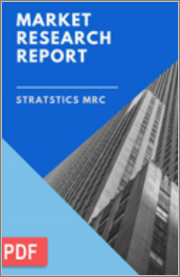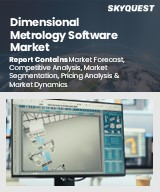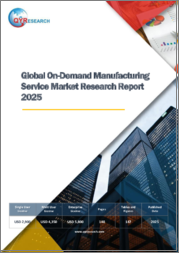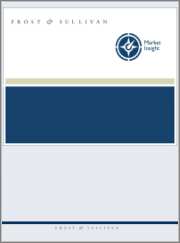
|
시장보고서
상품코드
1383500
CTD 측정 시스템 시장 예측(-2030년) : 유형, 기술, 용도, 지역별 세계 분석CTD Measuring System Market Forecasts to 2030 - Global Analysis By Type (Shallow Sea Type and Deep Sea Type), Technology (Wireless CTD Systems and Traditional CTD Systems), Application and By Geography |
||||||
Stratistics MRC에 따르면 세계 CTD 측정 시스템 시장은 2023년 38억 달러로 예측 기간 동안 7.7%의 CAGR로 성장하여 2030년에는 65억 달러에 달할 것으로 예상됩니다.
CTD는 전도도, 온도, 수심을 의미하며, CTD 측정 시스템은 호수, 강, 해양을 포함한 다양한 수생 환경에서 이 세 가지 매개 변수에 대한 데이터를 수집하고 기록하는 데 사용되는 과학적 도구입니다. 해양학, 해양 생물학 및 환경 모니터링 연구를 지원하며, CTD 시스템을 통해 수집된 데이터는 해양 순환, 수괴 특성 및 해양 생물의 분포를 이해하는 데 매우 중요한 역할을 합니다.
자원관리
자원 관리는 CTD 측정 시스템 시장의 주요 동인이며, 이러한 시스템은 수산 자원의 지속가능한 관리에 중요한 역할을 합니다. 어업에서 CTD 데이터는 최적의 어장을 식별하고, 어류 개체군에 대한 염분 및 수온 조건을 모니터링하고, 남획을 방지하고 해양 생태계를 보호하기 위해 어업 운영의 지속가능한 실행을 보장하는 데 도움이 됩니다. 또한, CTD 시스템은 수산 자원의 장기적인 지속가능성을 보장하고, 환경에 미치는 영향을 최소화하며, 자원 관리에 대한 정보에 입각한 의사결정을 내리는 데 필요한 중요한 정보를 제공합니다.
높은 비용
CTD 장비는 복잡하고 정밀한 엔지니어링이 필요하기 때문에 초기 비용이 많이 듭니다. 또한, 초기 소유 비용이 높은 이유는 신뢰할 수 있고 정확한 데이터를 보장하기 위해 지속적인 유지보수 및 교정이 필요하기 때문입니다. 소규모 연구 그룹, 학술 기관 및 예산이 제한된 프로젝트의 경우 높은 비용으로 인해 CTD 시스템 구매가 어려워 이러한 중요한 자원에 대한 접근이 제한됩니다. 또한 자원이 제한된 환경에서 연구하는 연구자들에게도 문제가 됩니다. 따라서 높은 비용은 시장 확대에 큰 장벽이 될 수 있습니다.
해양 탐사
이러한 시스템은 연구자와 과학자들이 심해의 신비를 풀어나가는 데 필수적입니다. 해양 생태계, 수중 자원 및 기후 변화에 대한 이해의 필요성이 증가함에 따라 해양 탐사의 원동력이 되고 있습니다. CTD 시스템은 해류를 파악하고, 수질을 모니터링하고, 해양 생물을 연구하기 위해 수온, 염분, 수심과 같은 매개 변수에 대한 중요한 데이터를 제공합니다. 해양 상황을 평가하고 해양 사업의 지속가능성과 안전성을 보장하기 위해 CTD 기술은 필수적이며 시장 수요를 주도하고 있습니다.
경쟁사
CTD 시스템에 대한 수요가 증가함에 따라 더 많은 제조업체와 공급업체가 시장에 진입함에 따라 경쟁이 심화될 것입니다. 이러한 경쟁 심화로 인해 업계는 여러 가지 측면에서 부정적인 영향을 받을 수 있습니다. 첫째, 기업들이 시장 점유율을 확보하기 위해 서로 경쟁하면서 가격 책정 및 수익률에 하방 압력을 가할 수 있습니다. 가격 경쟁은 전반적인 수익성을 떨어뜨릴 수 있으며, 이는 기업이 CTD 시스템을 강화하기 위한 연구개발에 자금을 투자하기 어렵게 만듭니다. 이러한 요인들이 시장 성장을 저해하고 있습니다.
COVID-19의 영향
COVID-19의 대유행은 CTD(전도도, 온도, 깊이) 측정 시스템 시장에 큰 영향을 미쳤습니다. 팬데믹으로 인한 가동 중단, 노동력 감소 및 운송 제한으로 인해 공급망에 혼란이 발생하여 CTD 시스템 및 관련 장비의 생산 및 납품에 지연이 발생했습니다. 데이터 수집 및 현장 조사는 팬데믹으로 인해 제한되었습니다. 여행 제한, 출입 통제, 사회적 거리두기로 인해 연구자들이 현장에서 CTD 시스템을 배치하고 유지하는 데 어려움을 겪고 있습니다.
예측 기간 동안 심해형 부문이 가장 큰 비중을 차지할 것으로 예상
심해 유형 부문이 가장 큰 점유율을 차지할 것으로 추정됩니다. 심해 환경의 극심한 압력, 저온 및 해수의 부식 작용은 모두 이러한 시스템이 견딜 수 있도록 만들어진 것입니다. 해양학, 해양 탐사 및 과학 연구는 심해 CTD 시스템의 일반적인 응용 분야로, CTD 시스템은 견고한 케이싱으로 구성되어 내부의 깨지기 쉬운 센서와 전자 장치를 보호합니다. 이 시스템을 통해 연구원들은 수온, 염분, 압력 등 다양한 심해의 위치와 깊이에서 해양 매개 변수에 대한 정확한 정보를 수집할 수 있습니다.
예측 기간 동안 무선 CTD 시스템 분야가 가장 높은 CAGR을 기록할 것으로 예상
무선 CTD 시스템 분야는 예측 기간 동안 유리한 성장을 보일 것으로 예상되며, CTD 측정 시스템에서 유용하고 독창적인 발전은 무선 CTD(전도도, 온도, 수심) 시스템입니다. 무선 CTD 시스템은 센서와 수면 사이의 데이터 전송에 물리적 케이블이 필요하지 않기 때문에 다양한 수중 환경에서 보다 유연하고 효과적인 데이터 수집을 가능하게 합니다. 이 시스템은 이동성 향상, 신속한 배치 및 회수, 케이블 손상 및 엉킴 가능성 감소 등 다양한 이점을 제공합니다. 또한, 어려운 해양 환경에서도 자유롭게 움직일 수 있어 원격 조종 차량(ROV) 및 자율 수중 차량에 특히 적합합니다.
가장 큰 점유율을 차지하는 지역
추정 기간 동안 북미 지역이 가장 큰 시장 점유율을 차지했습니다. 미국과 캐나다를 중심으로 한 이 지역은 해양학, 수권학 및 환경 과학 분야의 혁신과 연구의 중심지이며, CTD 시스템 시장은 대서양과 태평양에 걸친 광활한 해안선을 가진 미국에서 성장하고 있습니다. 캐나다는 대규모 담수 자원과 해양 영토를 보유하고 있기 때문에 큰 시장 점유율을 가지고 있습니다.
CAGR이 가장 높은 지역:
유럽은 다양한 응용 분야와 과학 연구, 환경 모니터링, 해양 산업에 대한 높은 관심으로 인해 예측 기간 동안 수익성 있는 성장을 이룰 것으로 예상됩니다. 유럽에는 해양학, 기후 연구, 해양 생물학에 종사하는 세계적으로 유명한 연구 기관, 대학, 과학 기관이 많이 있습니다. 호수, 강, 해양의 생물학적 상태는 CTD 시스템을 사용하여 특히 기후 변화의 관점에서 평가하고 관리할 수 있으며, EU의 환경 규제에 대한 대응은 이 지역에서 CTD 기술의 보급을 촉진할 것입니다.
무료 맞춤형 서비스:
이 보고서를 구독하는 고객은 다음과 같은 무료 맞춤화 옵션 중 하나를 이용할 수 있습니다:
- 회사 프로필
- 추가 시장 기업의 종합적인 프로파일링(최대 3개사까지)
- 주요 기업 SWOT 분석(3개사까지)
- 지역 세분화
- 고객의 관심에 따른 주요 국가별 시장 추정 및 예측, CAGR(참고: 타당성 검토에 따른)
- 경쟁사 벤치마킹
- 제품 포트폴리오, 지리적 입지, 전략적 제휴를 기반으로 한 주요 기업 벤치마킹
목차
제1장 주요 요약
제2장 서문
- 개요
- 이해관계자
- 조사 범위
- 조사 방법
- 데이터 마이닝
- 데이터 분석
- 데이터 검증
- 조사 접근법
- 조사 소스
- 1차 조사 소스
- 2차 조사 소스
- 가정
제3장 시장 동향 분석
- 성장 촉진요인
- 성장 억제요인
- 기회
- 위협
- 기술 분석
- 용도 분석
- 신흥 시장
- 신종 코로나바이러스 감염증(COVID-19)의 영향
제4장 Porter's Five Forces 분석
- 공급 기업의 교섭력
- 구매자의 교섭력
- 대체품의 위협
- 신규 참여업체의 위협
- 경쟁 기업 간의 경쟁 관계
제5장 세계의 CTD 측정 시스템 시장 : 유형별
- 천수형
- 심수형
제6장 세계의 CTD 측정 시스템 시장 : 기술별
- 무선 CTD 시스템
- 기존 CTD 시스템
제7장 세계의 CTD 측정 시스템 시장 : 용도별
- 심해
- 연안 수역
- 호수 저수지
- 하천
- 기타 용도
제8장 세계의 CTD 측정 시스템 시장 : 지역별
- 북미
- 미국
- 캐나다
- 멕시코
- 유럽
- 독일
- 영국
- 이탈리아
- 프랑스
- 스페인
- 기타 유럽
- 아시아태평양
- 일본
- 중국
- 인도
- 호주
- 뉴질랜드
- 한국
- 기타 아시아태평양
- 남미
- 아르헨티나
- 브라질
- 칠레
- 기타 남미
- 중동 및 아프리카
- 사우디아라비아
- 아랍에미리트
- 카타르
- 남아프리카공화국
- 기타 중동 및 아프리카
제9장 주요 발전
- 계약, 파트너십, 협업, 합작투자
- 인수와 합병
- 신제품 발매
- 사업 확대
- 기타 주요 전략
제10장 기업 개요
- Sea-Bird Electronics
- Xylem
- AML Oceanographic
- Sea & Sun Technology
- Idronaut
- JFE Advantech
- Nke Instrumentation
- Star-Oddi
- Aquatec Group
- Daowan Technology
- Valeport
- Keller
- Kongsberg
According to Stratistics MRC, the Global CTD Measuring System Market is accounted for $3.8 billion in 2023 and is expected to reach $6.5 billion by 2030 growing at a CAGR of 7.7% during the forecast period. CTD stands for conductivity, temperature, and depth. A CTD measuring system is a scientific tool used to gather and record data on these three parameters in a variety of aquatic environments, including lakes, rivers, and oceans. They support the study of oceanography, marine biology, and environmental monitoring by enabling scientists and oceanographers to collect high-quality data on water properties at various depths. The data collected by CTD systems are crucial for understanding ocean circulation, water mass characteristics, and the distribution of marine life.
Market Dynamics:
Driver:
Resource management
Resource management is a key driver in the CTD Measuring System market, as these systems play a crucial role in the sustainable management of aquatic resources. CTD data in fisheries aids in the identification of optimal fishing grounds, the monitoring of salinity and temperature conditions for fish populations, and the guarantee that fishing operations are conducted sustainably to avert overfishing and safeguard marine ecosystems. Moreover, CTD systems offer the vital information required to ensure the long-term sustainability of aquatic resources, minimize environmental effects, and make well-informed decisions about resource management.
Restraint:
High cost
CTD instruments are intricate and require precision engineering, which contributes to their substantial upfront costs. Furthermore, the higher initial cost of ownership is attributed to the continuous maintenance and calibration needed to ensure reliable and accurate data. Smaller research groups, academic institutions, and projects with tight budgets may find it prohibitive to purchase CTD systems due to their high cost, which would restrict their access to these crucial resources. It also presents a problem for researchers working in environments with limited resources. Hence, a high cost is a significant barrier to market expansion.
Opportunity:
Ocean exploration
These systems are essential to helping researchers and scientists solve the deep sea's mysteries. A growing need to understand marine ecosystems, underwater resources, and climate change is driving ocean exploration. In order to map ocean currents, monitor water quality, and study marine life, CTD systems provide vital data on parameters like temperature, salinity, and depth. In order to evaluate ocean conditions and guarantee the sustainability and safety of offshore operations, CTD technology is essential, driving market demand.
Threat:
Competition
Competition intensifies as more manufacturers and suppliers enter the market in response to the growing demand for these systems. The industry may be negatively impacted by this increased competition in a number of ways. Firstly, as businesses compete with one another to capture market share, it may put downward pressure on pricing and profit margins. Price competition can reduce overall profitability, which would make it difficult for companies to spend money on R&D to enhance their CTD systems. These factors are hindering market growth.
COVID-19 Impact
The COVID-19 pandemic had a notable impact on the CTD (conductivity, temperature, and depth) measuring system market. The supply chain was disrupted by lockdowns resulting from the pandemic, a smaller workforce, and transportation limitations, which caused delays in the production and delivery of CTD systems and related equipment. Data collection and field research were restricted by the pandemic. Travel restrictions, lockdowns, and social distancing measures made it difficult for researchers to deploy and maintain CTD systems in the field.
The deep sea type segment is expected to be the largest during the forecast period
The deep sea type segment is estimated to hold the largest share. Deep-sea environments' extreme pressures, low temperatures, and the corrosive effects of saltwater are all things that these systems are built to resist. Oceanography, marine exploration, and scientific research are the usual applications for deep-sea CTD systems. They are made up of a sturdy casing that shields the fragile sensors and electronics inside. They make it possible for researchers to collect exact information on ocean parameters at various deepwater locations and depths, including temperature, salinity, and pressure.
The wireless CTD systems segment is expected to have the highest CAGR during the forecast period
The wireless CTD systems segment is anticipated to have lucrative growth during the forecast period. A useful and inventive advancement in the CTD measuring system are wireless CTD (conductivity, temperature, and depth) systems. Wireless CTD systems enable more flexible and effective data collection in a variety of aquatic environments by eliminating the need for physical cables to transfer data between the sensor and the surface. They have a number of benefits, such as increased mobility, quicker deployment and retrieval times, and a lower chance of damage or entanglement to the cables. Additionally, they can move freely in difficult marine environments, which make them especially well-suited for remotely operated vehicles (ROVs) and autonomous underwater vehicles.
Region with largest share:
North America commanded the largest market share during the extrapolated period. This region, primarily comprising the United States and Canada, is a hub of technological innovation and research in oceanography, limnology, and environmental sciences. The market for CTD systems is growing in the United States because of its vast coastline that stretches along both the Atlantic and Pacific Oceans. Canada has a significant market share due to its large freshwater resources and maritime territories.
Region with highest CAGR:
Europe is expected to witness profitable growth over the projection period, owing to its diverse applications and strong emphasis on scientific research, environmental monitoring, and offshore industries. Europe hosts numerous world-renowned research institutions, universities, and scientific organizations involved in oceanography, climate studies, and marine biology. The biological condition of lakes, rivers, and oceans can be evaluated and managed with the use of CTD systems, particularly in light of climate change. Compliance with EU environmental regulations promotes a greater uptake of CTD technology in this region.
Key players in the market
Some of the key players in the CTD Measuring System Market include: Sea-Bird Electronics, Xylem, AML Oceanographic, Sea & Sun Technology, Idronaut, JFE Advantech, Nke Instrumentation, Star-Oddi, Aquatec Group, Daowan Technology, Valeport, Keller and Kongsberg.
Key Developments:
In Apr 2022, Xylem's New Smart Wastewater treatment solution cuts operating costs and reduces energy use by 25%. This off-the-shelf suite of digital solutions for conventional activated sludge (CAS) plants marks the latest breakthrough in the digitization of water utilities.
In Oct 2021, Valeport Launches new marine sensing and monitoring instruments. New Bathy2 - an enhanced, robust integrated instrument to provide reliable and accurate density corrected depth data up to 6000m. New miniIPS2 and uvSVX with unique interchangeable pressure heads, these next-gen sensors benefit users who work at different depths.
Types Covered:
- Shallow Sea Type
- Deep Sea Type
Technologies Covered:
- Wireless CTD Systems
- Traditional CTD Systems
Applications Covered:
- Deep Sea
- Coastal Waters
- Lake Reservoir
- River
- Other Applications
Regions Covered:
- North America
- US
- Canada
- Mexico
- Europe
- Germany
- UK
- Italy
- France
- Spain
- Rest of Europe
- Asia Pacific
- Japan
- China
- India
- Australia
- New Zealand
- South Korea
- Rest of Asia Pacific
- South America
- Argentina
- Brazil
- Chile
- Rest of South America
- Middle East & Africa
- Saudi Arabia
- UAE
- Qatar
- South Africa
- Rest of Middle East & Africa
What our report offers:
- Market share assessments for the regional and country-level segments
- Strategic recommendations for the new entrants
- Covers Market data for the years 2021, 2022, 2023, 2026, and 2030
- Market Trends (Drivers, Constraints, Opportunities, Threats, Challenges, Investment Opportunities, and recommendations)
- Strategic recommendations in key business segments based on the market estimations
- Competitive landscaping mapping the key common trends
- Company profiling with detailed strategies, financials, and recent developments
- Supply chain trends mapping the latest technological advancements
Free Customization Offerings:
All the customers of this report will be entitled to receive one of the following free customization options:
- Company Profiling
- Comprehensive profiling of additional market players (up to 3)
- SWOT Analysis of key players (up to 3)
- Regional Segmentation
- Market estimations, Forecasts and CAGR of any prominent country as per the client's interest (Note: Depends on feasibility check)
- Competitive Benchmarking
- Benchmarking of key players based on product portfolio, geographical presence, and strategic alliances
Table of Contents
1 Executive Summary
2 Preface
- 2.1 Abstract
- 2.2 Stake Holders
- 2.3 Research Scope
- 2.4 Research Methodology
- 2.4.1 Data Mining
- 2.4.2 Data Analysis
- 2.4.3 Data Validation
- 2.4.4 Research Approach
- 2.5 Research Sources
- 2.5.1 Primary Research Sources
- 2.5.2 Secondary Research Sources
- 2.5.3 Assumptions
3 Market Trend Analysis
- 3.1 Introduction
- 3.2 Drivers
- 3.3 Restraints
- 3.4 Opportunities
- 3.5 Threats
- 3.6 Technology Analysis
- 3.7 Application Analysis
- 3.8 Emerging Markets
- 3.9 Impact of Covid-19
4 Porters Five Force Analysis
- 4.1 Bargaining power of suppliers
- 4.2 Bargaining power of buyers
- 4.3 Threat of substitutes
- 4.4 Threat of new entrants
- 4.5 Competitive rivalry
5 Global CTD Measuring System Market, By Type
- 5.1 Introduction
- 5.2 Shallow Sea Type
- 5.3 Deep Sea Type
6 Global CTD Measuring System Market, By Technology
- 6.1 Introduction
- 6.2 Wireless CTD Systems
- 6.3 Traditional CTD Systems
7 Global CTD Measuring System Market, By Application
- 7.1 Introduction
- 7.2 Deep Sea
- 7.3 Coastal Waters
- 7.4 Lake Reservoir
- 7.5 River
- 7.6 Other Applications
8 Global CTD Measuring System Market, By Geography
- 8.1 Introduction
- 8.2 North America
- 8.2.1 US
- 8.2.2 Canada
- 8.2.3 Mexico
- 8.3 Europe
- 8.3.1 Germany
- 8.3.2 UK
- 8.3.3 Italy
- 8.3.4 France
- 8.3.5 Spain
- 8.3.6 Rest of Europe
- 8.4 Asia Pacific
- 8.4.1 Japan
- 8.4.2 China
- 8.4.3 India
- 8.4.4 Australia
- 8.4.5 New Zealand
- 8.4.6 South Korea
- 8.4.7 Rest of Asia Pacific
- 8.5 South America
- 8.5.1 Argentina
- 8.5.2 Brazil
- 8.5.3 Chile
- 8.5.4 Rest of South America
- 8.6 Middle East & Africa
- 8.6.1 Saudi Arabia
- 8.6.2 UAE
- 8.6.3 Qatar
- 8.6.4 South Africa
- 8.6.5 Rest of Middle East & Africa
9 Key Developments
- 9.1 Agreements, Partnerships, Collaborations and Joint Ventures
- 9.2 Acquisitions & Mergers
- 9.3 New Product Launch
- 9.4 Expansions
- 9.5 Other Key Strategies
10 Company Profiling
- 10.1 Sea-Bird Electronics
- 10.2 Xylem
- 10.3 AML Oceanographic
- 10.4 Sea & Sun Technology
- 10.5 Idronaut
- 10.6 JFE Advantech
- 10.7 Nke Instrumentation
- 10.8 Star-Oddi
- 10.9 Aquatec Group
- 10.10 Daowan Technology
- 11.1 Valeport
- 11.2 Keller
- 11.3 Kongsberg



















